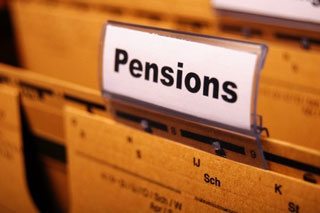 For Canadians who are planning to retire or have perhaps lost their jobs and who have a defined-benefit (DB) pension plan, there has never been a better time to review the age-old question of whether they should keep the pension or take the commuted value (CV).
For Canadians who are planning to retire or have perhaps lost their jobs and who have a defined-benefit (DB) pension plan, there has never been a better time to review the age-old question of whether they should keep the pension or take the commuted value (CV).
That’s because of the way the CV – or the amount of money that the pension plan would need to have today to pay out the future stream of income benefits at the pension holder’s retirement – is calculated. Specifically, an implied rate of return, which is determined considering the interest rate on the seven-year Government of Canada bond and the long-term Canada bond, is needed to determine the CV. The lower the interest rate on this bonds, the greater the CV. Incidentally, the rate of the seven-year bond is now at a paltry 0.48 per cent.
So, how does this all work to determine the CV? The lower the interest rate, or implied return, the larger the capital base needed to generate a given annual income stream or pension.
To make an informed decision, the pension holder must get information from the pension plan. Unfortunately, pension plan providers have been making that more difficult. In many cases, they’re refusing to provide that information to pension plan members, making it virtually impossible to make an informed decision about their financial future.
In addition to this roadblock, the Office of the Superintendent of Financial Institutions (OFSI) placed a portability freeze on all federally regulated pension plans. That includes industries such as aviation and airlines, banks, broadcasting and telecommunications, interprovincial transportation, marine navigation and shipping and railways. The only way these pension plan members can take the CV is if they’re eligible for early retirement. OSFI’s freeze has not affected provincially regulated pension plans. (Note: OSFI lifted the portability freeze on Aug. 31, subject to certain conditions, days after this article was published.)
Despite these obstacles, now still may be an opportune time to take a pension’s CV for those who are able to do so. That’s because according to the Canadian Institute of Actuaries’ Actuarial Standards Board, changes to the interest rate and retirement age assumptions will be implemented on Dec. 1 that will cause the CV to be lower.
Assuming that a member has access to the CV and it makes financial sense to take it, what happens next? The CV typically comes out in two pieces. First, there’s a maximum amount that’s transferred to a registered locked-in retirement account (LIRA) and remains in a tax-deferred state. Then, the excess amount comes out as a cash payment and is fully taxable to the pension plan holder in the year it’s received.
Although that initial tax payment scares some people away from this strategy, it still makes financial sense to take the CV over the pension in many cases. Examples include if a pension plan member has considerable contribution room to shelter the cash portion of the payment in their registered retirement savings plan (RRSP) or if the rate of return needed on the CV to exceed the pension payment is not excessive.
Once the funds are out of the pension plan, they should be invested in a responsible and conservative manner. In doing so, it’s still possible to earn an annual yield of 5 per cent or more. If we’re more focused on income and ignore the stock market’s gyrations, there are many options for earning such a yield.
One strategy is to invest in Canadian dividend-paying stocks that can produce a consistent, ongoing yield. Examples include Canadian Imperial Bank of Commerce (CM-T), which has a yield of 6.01 per cent, Enbridge Inc. (ENB-T), with a yield of 7.44 per cent, and BCE Inc. (BCE-T), with a 5.87-per-cent yield. In addition, Canadian dividend payments are tax preferred. In Ontario, there are no taxes on dividends until approximately $48,500 of income is generated; then, taxes are less than 7 per cent on amounts below about $78,700 – assuming no other income.
Another consideration is alternative income managers, available to high-net-worth individuals, that invest in sectors like private debt or global real estate. During the COVID-19 crisis, these managers’ income payments have been largely unaffected. Depending on the fund, the target yield usually ranges between 5 and 8 per cent. As the income from these funds is interest, it’s best to place these investments in registered accounts to shelter the income.
Beyond the financials, the CV often offers better security for the pension plan member’s family and estate. If a pension holder dies with a spouse, then there’s a spousal pension. If they both die, there’s nothing remaining for the estate. If the CV is taken and the individual dies, then the assets in that individual’s LIRA would transfer to the spouse’s RRSP. If they both die, the after-tax value become part of the estate.
Although DB pension plans were once the golden path to retirement security and no one would ever dream of cashing it in for the CV, times have changed – and financial strategies should change along with them.

